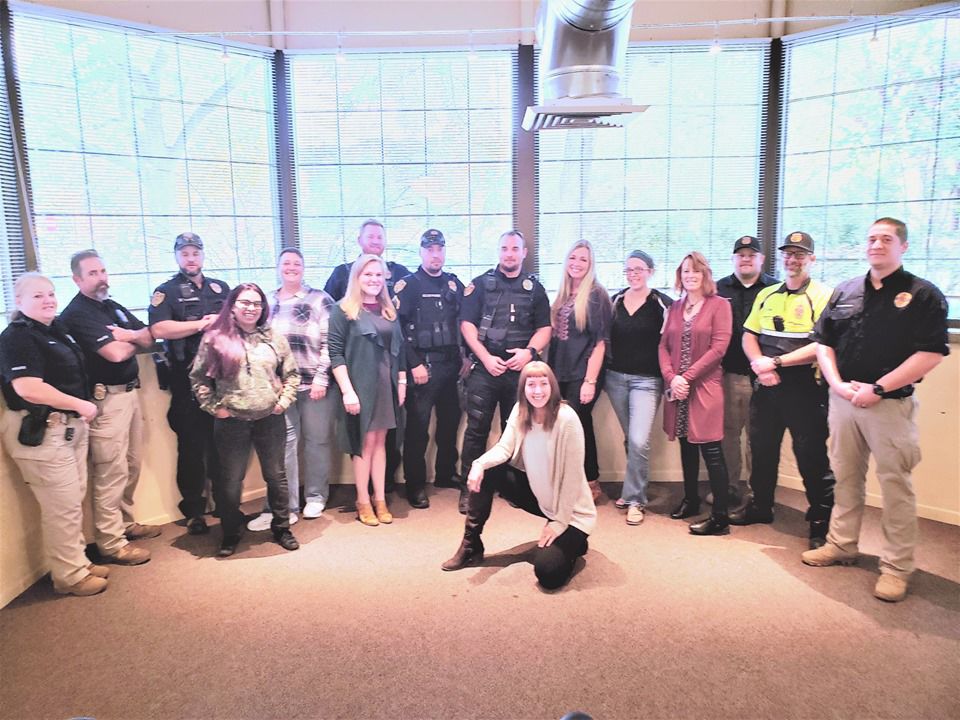Some information may be outdated.
What if something could have been done?
That’s often the haunting question after a death by domestic violence. Small clues and incidents that didn’t seem so serious take on new significance and importance all too late.
Now researchers, advocates and first responders are working to end that question, figuring out ways to provide services to potential victims early and prevent violence from continuing—and escalating.
Research looking at deaths from domestic violence showed a pattern: in the year previous to the homicide, more than 44% of abusers had been arrested and almost one-third of victims contacted the police.
For those victims, these interactions were lost opportunities to be connected with more information and support, potentially helping victims leave a dangerous situation before it becomes deadly.
Police officers reporting to a call are only getting a snapshot of a relationship, not the whole story. But a simple questionnaire can lead to much better outcomes and may just be saving lives.
The Moab City Police Department and Seekhaven Family Crisis and Resource Center work in collaboration using the Lethality Assessment Program, adopted locally in 2018. The organizations recently completed their yearly refresher course, sharing information and training new officers.
“It’s been an important collaboration for both our organizations,” said Abigail Taylor, deputy executive director of Seekhaven.
Established in 1990, Seekhaven assists survivors of domestic violence and sexual assault in rebuilding their lives. Serving Grand County and Southeastern Utah, Seekhaven provides a wide range of essential services including client advocacy, emergency shelter, and transition assistance.
The Lethality Assessment Program (LAP) helps first responders identify victims of intimate partner violence who are in highest danger of being killed by their intimate partners. Domestic violence can take many forms: physical violence, stalking, financial abuse, controlling behaviors, emotional and mental abuse.
By understanding the dynamics of violent relationships, first responders can intervene before a situation becomes lethal.
The program draws on in-depth research that looked at hundreds of cases of domestic violence-related homicide and attempted homicide, trying to look for patterns or commonalities.
Evaluating these patterns led to the development of a short survey, allowing first responders to quickly see more of the context. Has violence been getting worse? Is the situation showing signs that have led to murder in other cases?
Rather than see a 911 call about a domestic violence as a single incident, “they get a more comprehensive view of other things that may have happened at different times that they might not have known,” said Taylor.
According to the National Institute of Justice, the dual goals of the Lethality Assessment Program are “to educate intimate partner violence (IPV) victim-survivors about risk factors for homicide and to connect them with support and safety planning services.”
When police officers identify people involved in intimate partner violence who are statistically at risk of homicide, they can inform the victim about the danger that she or he is in — that people in similar situations have been killed.
“A lot of individuals don’t know how dangerous their situations are,” said Taylor. “Their abuse is oftentimes normalized and sometimes expected and accepted.”
The officer directly connects them to Seekhaven via a hotline call, where trained advocates offer support, shelter and safety planning.
“It’s important that in this program, the officer is not going to push anyone into making a decision that they’re not ready for. It’s focused on giving information and asking what what people need,” said Taylor. “That’s really important in initiating change.”
Once a victim engages with help from an organization like Seekhaven, their risk of reassault, and death, diminishes greatly. Research shows that only 4% of abused victims had used a domestic violence hotline or shelter within the year prior to being killed by an intimate partner, according to data from Lethality Assessment Program.
“Based on the numbers that I’m seeing from our victim advocate, it’s been hugely successful,” Moab City Police Chief Bret Edge said, referring to data showing an increase in services and referrals provided to victims.
“I think there’s been a significant benefit to the community,” said Edge.
“We need these situations where organizations can work more as a team, in partnership,” said Taylor. “We have different roles, but we’re unified in the mission to assist a person and to treat them with dignity, and respect.”
“Even before we started this program, Seekhaven has always been really, really good to work with and we’re proud of the partnership that we’ve developed,” said Chief Edge.
“I would love to have other organizations join us and use the LAP as well,” said Taylor, commenting that expanding the number of trained advocates would lead to more potential victims being saved. Ultimately, she would like to see more of the public be aware of how to help.
“Anyone can be a first responder,” Taylor said. “Anyone can encourage someone to reach out for support and aid.”
Seekhaven’s crisis hotline is available 24 hours a day by calling 435-259-2229.
“We have different roles, but we’re unified in the mission to assist a person and to treat them with dignity, and respect.”
– Abigail Taylor, Seekhaven deputy executive director
Police, Seekhaven work to prevent domestic violence deaths
Appreciate the coverage? Help keep local news alive.
Chip in to support the Moab Sun News.





